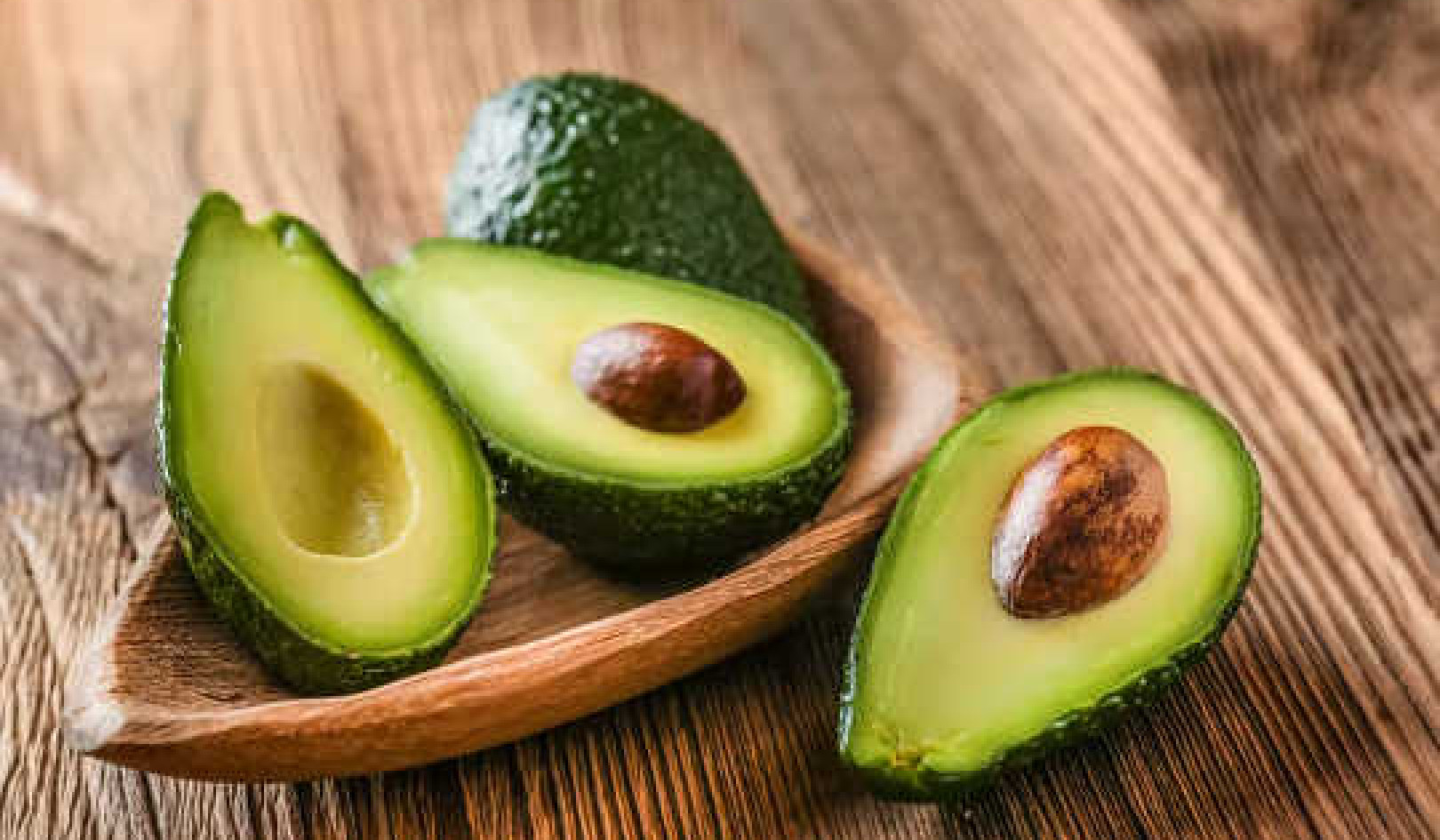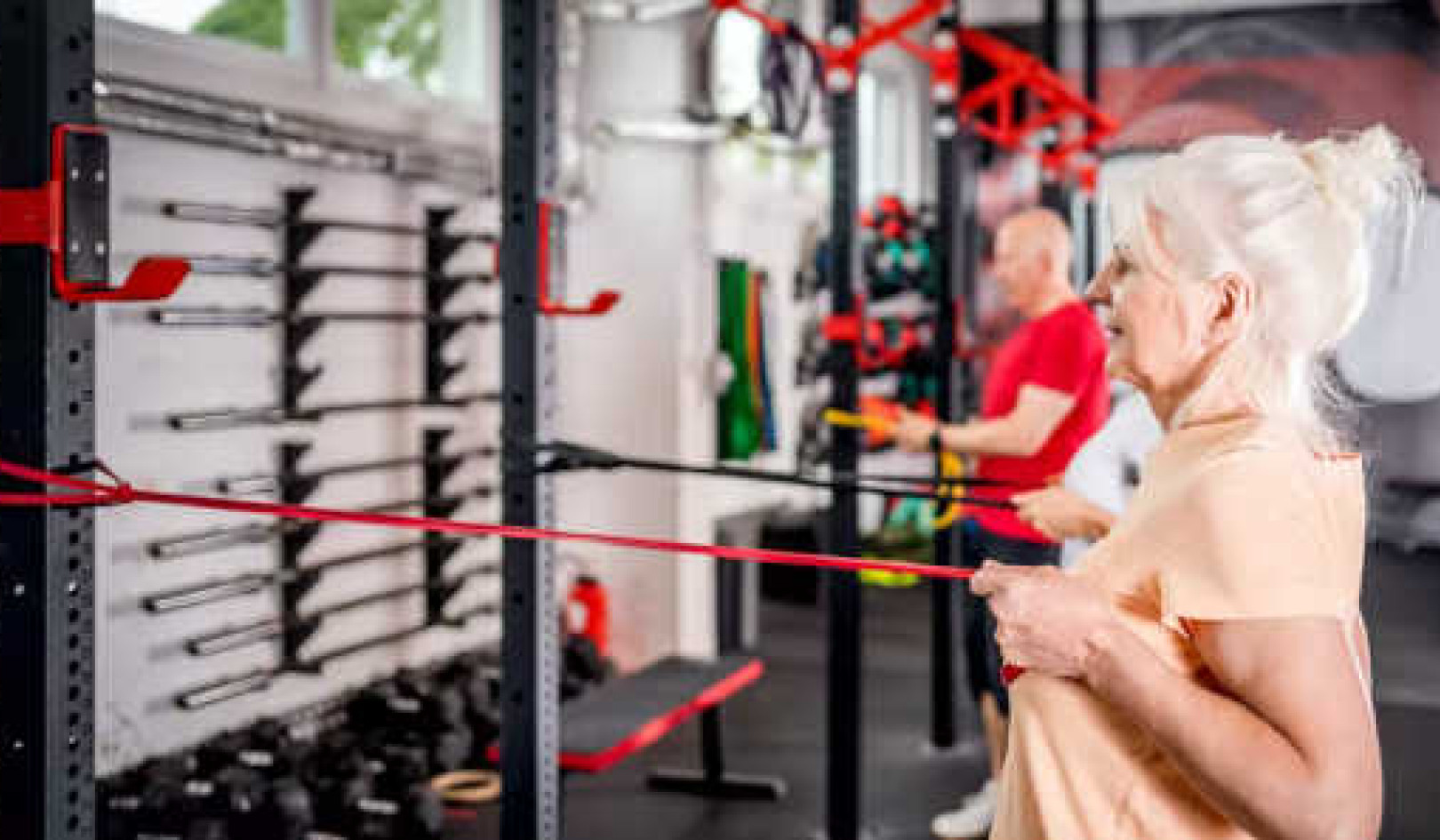Pain travels along a complex pathway in the nervous system, and all along that pathway ? in the nerves and in the brain ? there are biological "gates" that can be closed, to shut off pain. When these biological gates are closed, the pain is reduced or eliminated.
This concept is called the "gate theory," and it has revolutionized the field of pain management. I am proud to say that I was among the first doctors to clinically incorporate holistic modalities utilizing this theory into my treatment of pain patients.
This theory is now becoming increasingly accepted by pain specialists, but it's still relatively new. Therefore, many doctors who do not specialize in pain management don't really understand it, and don't incorporate it into their treatments of pain. Because of this, their treatments often fail.
In fact, many doctors don't even fully understand what chronic pain is. Some of them think that chronic pain is basically the same thing as short-term "acute" pain. They believe that chronic pain is just acute pain that lasts longer.
That's not true.
Chronic pain and acute pain are vastly different. Short-term acute pain is almost always a symptom. It's a warning that something is wrong. When you fix whatever is wrong, the pain usually goes away.
But chronic pain is generally not a symptom. Most often it is not a warning that something is wrong. For the most part, chronic pain is a disease. Most chronic pain is caused by a malfunction of the nervous system ? the nerves and the brain. To a large extent, chronic pain is in the brain.
Processing pain signals is a very complicated task, and sometimes our brains make mistakes in this process, just as they do when we add numbers or play the piano. But those mistakes can usually be corrected.
When all of the gates in the nervous system's pain pathway are allowed to remain wide open, pain can begin to "circulate" in a ceaseless cycle.
This cycle begins at the original site of the pain, generally because of an injury or illness. Then pain travels up the spinal cord to the brain. The brain processes the pain signals, then sends nerve impulses back down the spinal cord, to the original site of the pain, sensitizing that area, and causing inflammation. This sensitization and inflammation help protect the damaged area, by forcing us to favor it, and it also rushes healing chemicals to the area. But it magnifies the pain, and even creates more pain. This new pain then travels back to the brain -- and the cycle begins again.
The pain impulses can literally begin to have "a life of their own," as pain itself continues to cause more pain.
As I've mentioned, this cycle of pain can be reinforced by many of the elements of chronic pain syndrome. Some of these elements tend to jam open the gates of the pain pathway and to magnify the sensations of pain. Also, chronic pain syndrome often makes pain patients feel passive and defeated, and discourages them from doing the many things they must do to make their pain go away.
Now let's take a trip along the pain pathway, and I'll point out all the various gates where pain can be reduced, blocked, and eliminated.
A Journey down the Pain Pathway
A pain impulse usually starts its trip along the pain pathway when you suffer an injury or illness. Let's say you cut your finger.
Have you ever noticed that when you cut yourself, you usually feel the sensation of the cut before you feel the pain from it? That happens because you have separate nerves for touch and for pain ? and the "touch" nerves send signals more quickly than the pain nerves. That's why you feel the cut before the pain.
Your fast "touch" nerves shoot signals toward your brain at about 200 miles per hour, while your pain nerves send signals to your brain at a relatively slow speed. Acute pain travels at only about 40 miles per hour, and chronic pain can travel as slowly as 3 miles per hour. This difference in speed occurs mostly because "touch" nerves are generally better insulated.
Whenever you injure your finger, you tend to grab it and squeeze it or rub it, don't you? That's a natural instinct. You do that because it decreases your pain. The reason it decreases your pain is that it shoots fast "touch" signals toward your pain gates, and those fast touch signals outrun the slow pain signals. By the time the pain signals arrive, your pain gates are already crowded with touch impulses, and the pain signals have a hard time squeezing through.
So already you know an excellent anti-pain strategy: Give your nervous system a competing source of input ? especially one that can "outrun" pain signals.
There are many ways to provide a competing source of input, other than just rubbing a painful area. This can also be done biochemically, mechanically, electrically ? and even with thoughts!
One obvious lesson from this is: Don't be macho by trying to just ignore the pain when you first get hurt. Go after it! Beat it! It bothers me when I'm watching a baseball game and the batter gets hit by a pitch and just stands there, not rubbing the injured area, because that would "give the other team satisfaction." That appeals to the athlete in me ? but not the pain specialist. As you'll soon see, once pain gets started, it can be hard to stop. However, if you take care of your short-term, acute pain right away, you can reduce the chance that it will become a long-standing chronic pain.
Now let's keep traveling along your pain pathway and discover more ways to stop pain.
When pain signals squeeze onto the "elevator" of your spinal cord, headed for your brain, they automatically trigger the release of several chemicals that help them travel to the brain. These chemicals, called neurotransmitters, are the biochemical messengers that carry pain signals from one nerve cell to the next. Your brain, as you probably know, also uses neurotransmitters to carry all of your thoughts and feelings.
The three primary neurotransmitters that "ship" pain signals to the brain are substance P, NMDA (n-methyl-d-aspartate), and glutamate. Of these, substance P seems to be the most active, and most important. Without these three substances ? especially substance P ? pain signals have a much harder time reaching the brain. However, if there is an excess of any of these three substances, pain signals have a much easier time reaching the brain.
So, again, we have another way to stop pain: by manipulating the levels of one or more of these neurotransmitters. This can be done in several ways. One way is with pharmaceutical and over-the-counter drugs, and another is with acupuncture. When you learn the details of my pain program, you'll learn all the ways.
Here's more good news: The body, in its natural, innate wisdom, has its own way of keeping these pain neurotransmitters from flooding the brain, and overwhelming us with pain. The body forces these pain chemicals to travel through a pain gate that sits near the back of the spinal cord. This pain gate is composed of a substance that has the consistency of jelly; it's called the substantia gelatinosa of the dorsal horn.
Thus we have yet another method of controlling pain: supporting the function of this gate. This is achieved by supporting the overall health of the nervous system. If the nervous system is exhausted, stressed, or nutritionally malnourished, this gate will lose its efficiency.
Thus, the better your nervous system functions, the higher your "pain threshold" will be. That's one reason, for example, why you feel more pain when you don't get enough sleep: your lack of sleep hampers the ability of your nervous system to close its pain gates.
However, no matter how well your pain gates are working, some pain signals are certain to reach your brain. This is natural and desirable, of course, because without pain we would constantly be in grave danger of injury.
When pain hits the brain, that's when your body and mind really go to war against it ? if your body and mind are working efficiently, and in proper coordination with each other.
So far, you've just been "playing defense" against pain. But when your brain receives the first pain signals, and realizes that your body is fighting its most vicious enemy, your brain starts to "play offense." It launches a counterattack!
In the next few pages I'll tell you how to make that counterattack fierce.
Counterattack!
Pain signals enter your brain in an area called the thalamus. The thalamus is where your brain "sorts out" most of its incoming physical signals. For example, besides dealing with pain, your thalamus also handles things like hunger and thirst.
Instantly, your thalamus sends the pain signal to the two most important parts of your brain?your cortex, which does your thinking, and your limbic system, which governs your emotions.
When this happens, your thinking brain and your emotional brain have a dialogue, in which they "compare notes" on the pain signal. They try to decide how serious the pain is, where it's located, what it means, and how to deal with it. They analyze how strong the pain signals are, how frequently they're being sent to the brain, and how long the signals have lasted.
If, during this dialogue, your cortex and limbic system decide the pain signals aren't very serious, they tell your body to relax and tell your neurotransmitter system to pump out a calming brain chemical called serotonin. This causes the nerves that first picked up the pain signal to "quiet down," and it causes the muscles around the injured area to relax. Also, your blood vessels?which had been constricted by alarm?begin to loosen up. Your body soon returns to its normal state. The acute pain soon subsides, and you feel fine again.
However, let's say that when you cut your finger, it really hurts, the cut looks deep, and blood is gushing out. Your cortex and limbic system scan your memory, and they don't like what they find. Your memory says, "This is the worst cut you've had in years. It's bound to hurt, and if you're not careful, the finger will get infected." When your cortex and limbic system hear this, they start yelling, "Red alert! Red alert! We've got a problem!"
The all-out counterattack begins!
Instead of telling your neurotransmitter system to pump out calming neurotransmitters, your cortex and limbic system put in an order for the stimulating neurotransmitter norepinephrine, which is a form of adrenaline. This always happens when your body is under assault. Suddenly you begin to experience the classic symptoms of the "fight-or-flight response," which is also called the "stress response." Your blood vessels constrict, your heart pounds, your muscles tighten, and your nerves go "on edge," as they wait for further problems.
This is when things can go very wrong. This is when chronic pain can begin. If your counterattack doesn't work properly, you can end up with chronic pain. Your counterattack has to be strong, but not too strong. If it's not strong enough, or if it's too strong, it can contribute to the neurological malfunctions that create chronic pain.
One thing your counterattack must accomplish is the creation of a reasonable balance between the production of calming serotonin and stimulating norepinephrine. When you're alarmed, your body badly needs serotonin to help calm down, and to begin to close some of the pain gates. Unfortunately, the more alarmed you become, the more those gates are likely to open up, and to even "jam open" indefinitely.
Another problem that can arise at this point, as mentioned before, is sensitization of the injured area. When pain registers in the brain, the brain begins to closely monitor the injured area, via the nervous system, as part of its counterattack. The nerves around the injured area become more sensitive. They can even start carrying pain signals from stimuli that normally wouldn't cause pain. For example, the skin around your cut finger might hurt when you touch it, even though it's not injured.
Sometimes pain signals can even "jump" bioelectrically from one pain-carrying nerve to a neighboring pain nerve that had previously been free of stimulation. When this happens, it increases the amount of pain headed toward the brain. And when the brain receives these new signals, it sensitizes the injured area even more, contributing to the cycle of pain.
However, the more you nurture your nervous system, with a comprehensive program that builds neurological strength, the less likely this will be to occur. One simple reason why: As your nervous system becomes healthier, the sheaths that insulate your nerves will grow thicker, and help prevent these neurological "leaks."
Another "big gun" in your counterattack against pain is the production of your body's own natural, morphine-like opiates?endorphins, dynorphins, and enkephalins. These substances are ten times stronger than morphine. However, you never build up tolerance to them as you do to drugs.
These natural opioids not only flood the brain?giving physical and psychological relief?but also travel to one of the pain gates in your spine. There they directly "battle" pain-carrying substance P, trying to keep substance P from entering the nerves that go to the brain.
Sometimes you have enough endorphins to overpower your substance P, and stop the pain signals that are trying to get to your brain. But sometimes you don't have enough. When that happens, pain has one less obstacle to overcome.
As you might imagine, though, there are ways to increase your output of endorphins. For example, you can do it with exercise. However, exercise is often avoided by people with chronic pain syndrome. That's a mistake?one you will need to correct to end your chronic pain.
If you don't produce enough endorphins, or enough serotonin, your pain signals begin to increase in intensity, frequency, and duration. When this happens, the signals themselves often "jam open" the pain gates.
Then pain travels freely from the injured area to the brain, and back again. As this happens repeatedly?millions of times per hour?pain signals become "engraved" upon the nervous system. Pain signals literally become a physical part of the anatomy of your nervous system, just like the memories that are engraved in your brain.
As your injury heals, this engraved pain can remain. It no longer requires the stimuli of the injury. Tragically, it now has a life of its own. When this happens, the pain is not a symptom, it's a disease.
How Healing Can Hurt
Now let me tell you about another problem you face.
As the brain carries out its counterattack against pain, it also launches a counterattack against the injury itself. This counterattack is commonly referred to as the healing process. Unfortunately, the healing process can also contribute to the disease of chronic pain.
One way that healing contributes to pain is through the process of inflammation. Inflammation is a natural part of your body's response to injury. However, inflammation can get out of control. When it does, it can cause great pain.
Inflammation starts when the brain sends "alarm signals" back down to the injured area. Those signals cause increased blood flow to the area, as your body tries to fight infection and repair damage. But some of this extra blood leaks out of its vessels and causes swelling, soreness, stiffness, and warmth. This blood also releases potent chemicals that make the area even more sensitive.
Normally, inflammation goes away when the injury heals. But when pain becomes engraved upon the nervous system, inflammation can remain. At this point it serves no purpose?it just hurts. It's no longer a symptom?it's a disease. Inflammation is the major culprit in many kinds of pain.
However, there are many effective ways to fight inflammation. You can use anti-inflammatory drugs, such as ibuprofen, or certain nutrients. You can even stop inflammation before it starts, with nutritional therapy.
Another way that the healing process causes pain is by creating muscle spasms. A muscle spasm starts out as a natural protective mechanism; it shields a distressed area by immobilizing it. In a way, it's like a plaster cast, or a splint.
Muscle spasms begin when your body experiences pain. When this happens, the body often contracts the muscles near the painful area. Frequently, though, those muscles remain tight, or in spasm. Part of the reason a muscle stays tight is that the spasm itself often hurts. Therefore, it's very easy to create a cycle of pain-spasm-pain-spasm.
If these spasms are ignored, they can become virtually permanent. Muscle tissues can even become, in effect, "glued" together.
Sometimes, ongoing muscle spasms are quite noticeable, and cause great pain. This often occurs in chronic musculoskeletal pain, including back pain and neck pain. At other times, however, the muscle spasms are subtle, and are confined to a very small area. These less noticeable muscle spasms can be insidious, though. One problem they often cause is "referred pain"?pain that exists in a location other than the immediate area of the spasm. For example, a small muscle spasm in the neck can cause a severe headache. Fortunately, though, there are a number of ways to get rid of these spasms. One of the best ways is with massage.
A third way that the healing process causes pain is when damaged pain nerves heal improperly. When damaged pain nerves heal and regrow, they often do so imperfectly, and begin to fire spontaneously, sending pain signals to the brain for no reason at all.
Frequently the victims of imperfect nerve regrowth get blamed for "making up" their pain, because they no longer have an obvious injury. Often, even their own doctors tell them that their pain is all in their minds. The victims get treated as if they were just neurotic, or cowardly. How unfair! And how stupid!
In fact, there is one very obvious example of this kind of pain: phantom limb pain. Up to 85 percent of all amputees feel pain that seems to come from their missing limbs. In some types of amputations, more than one-third of all patients feel severe pain. This pain results, in part, from the improper healing of severed nerves.
However, poor healing of severed nerves isn't the only cause of phantom limb pain. Phantom limb pain is also often caused by the pain that often preceded the surgery?the pain from the injury or illness that necessitated the surgery. This pain, if it becomes engraved upon the nervous system, can continue to exist even after the original source of the pain has been surgically removed, with no significant damage to nerves.
Here's another interesting illustration of the fact that pain can become engraved upon the nervous system, including the brain itself. Sometimes paralyzed people feel pain in the parts of their bodies that can no longer move, and that no longer respond to external stimuli. When this happens, doctors sometimes partly sever the patients' spinal cords, to relieve their pain. Occasionally, though, even this does not stop the pain. Unfortunately for the paralyzed people, their pain is no longer in their bodies. It's in their brains.
I'll give you one more really fascinating example that indicates that chronic pain can become "centralized" in the brain. As you may have heard, it's possible to make people have vivid memories of past events just by stimulating different areas of people's brains with electrodes. When this happens, memories often come flooding back with crystal clarity. Knowing about this phenomenon, pain researchers tried to evoke pain in test subjects by electrically stimulating the area of their brains that first receives pain signals?the thalamus. However, researchers found that subjects with no history of chronic pain were not affected by stimulation of the thalamus. But when researchers stimulated this area of the brain in chronic pain patients, the patients felt intense pain. For example, one patient who had formerly experienced the chest pain of angina pectoris reported terrible pain in her chest when her thalamus was stimulated. Thus, this angina patient discovered that, for her?as with other chronic pain patients?pain is in the brain.
©1999 by Dharma Singh Khalsa, M.D
 This article is excerpted from the book:
This article is excerpted from the book:
The Pain Cure
by Dharma Singh Khalsa, M.D.
©1999. All rights reserved. Posted with permission from Time Warner Bookmark.
Click here for more info or to order this book

About The Author
Dharma Singh Khalsa, M.D. is the founding director of the Acupuncture Stress medicine and Chronic Pain Program at the University of Arizona Teaching Hospital in Phoenix. He is the author of The Pain Cure as well as of Brain Longevity and Meditation As Medicine. Visit his website at www.meditation-as-medicine.com

























